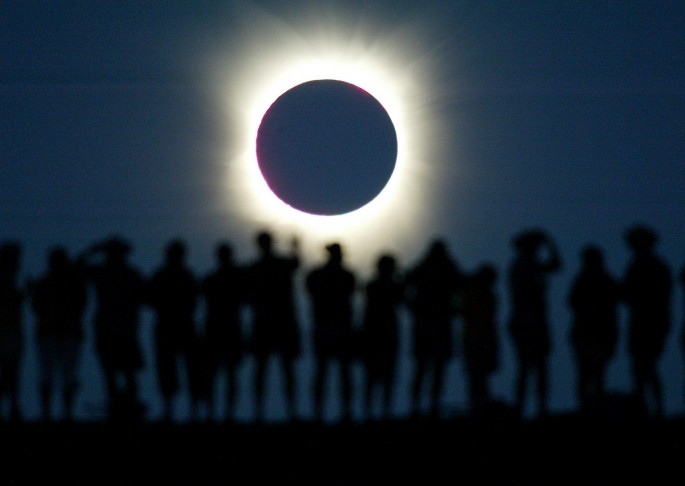Mark your calendars! On Friday, the March sky will host a spectacular view of 2015's first solar eclipse concurring with Supermoon and Equinox. The eclipse will begin at 07:41 UTC and will end at 11:50 UTC on March 20. It will be a total solar eclipse for those residing in Svalbard, Norway and Faroe Islands. But for those in Europe, northern and western Africa and northern and Eastern Asia, it will be a partial solar eclipse.
The upcoming eclipse is said to be the largest since the one that occurred in August 1999. The next occultation is expected to take place in the year 2026. Enthusiasts are advised to watch the astronomical event safely, avoiding any damage to their eyes. Meanwhile, experts have issued a warning to the motorists and drivers in the UK about the dangers of the eclipse occurring during rush-hour according to The Independent.
The website notes that the moon covers 84 percent of sun in London, 89 percent in Manchester, 93 percent in Edinburg and Glasgow, and 97 percent in Lerwick, Shetland Isles. It is said that the proportion of sun blanketed by the moon during the eclipse will be more in the northern regions of the UK.
Experts fear that the drivers might be distracted by the view when sun, moon and earth gather in an alignment, risking the dangers of an accident. "Safety is a top priority," a Highways Agency spokesperson told the website. According to the agency's representative, drivers and motorists are advised to drive cautiously. They must adjust "their driving according to weather and road conditions" during the event, the spokesperson was quoted as saying.
Robin Scagell, the vice president of Royal Astronomical Society and the Society for Popular Astronomy (SPA), said that the solar eclipse takes place "right in the middle of the rush hour" and it is not the "best time from a safety point of view."
Furthermore, clicking a selfie during the solar eclipse is another danger experts fear could cause severe damage according to Telegraph. The publication states that the College of Optometrists have suggested that clicking photos using smart phones or cameras can be as dangerous as looking directly at the Sun during the eclipse. This could result in burnt retina and blindness. Only specialised glasses, with the ability to block out the harmful rays can keep eyes safe.
"Taking a selfie could potentially put you at risk as you may end up accidentally looking directly at the Sun while aligning yourself and your phone," Daniel Hardiman-McCartney, a clinical adviser at the College of Optometrists sai



























